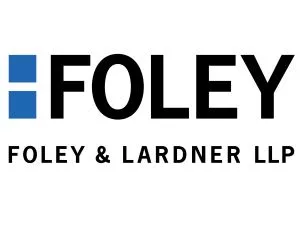- with readers working within the Retail & Leisure industries
- with Senior Company Executives, HR and Finance and Tax Executives
- in European Union
- in European Union
- in European Union
- with readers working within the Accounting & Consultancy, Retail & Leisure and Law Firm industries
The Seventh Circuit's recent decision in Richards v. Eli Lilly & Co. et al. (Aug. 5, 2025) marks a pivotal shift in how district courts manage collective actions under the Fair Labor Standards Act (FLSA) across Illinois, Indiana, and Wisconsin. The ruling injects much-needed rigor into the notice process, requiring courts to consider evidence from both sides before notice is sent to hundreds or thousands of potential plaintiffs. This new standard will provide an additional tool to pressure-test weak cases, potentially saving employers significant litigation costs and reducing artificially inflated settlements.
The FLSA Collective Action Landscape
The FLSA permits employees to pursue claims not only on their own behalf but also for other "similarly situated" individuals through collective actions. Unlike typical Rule 23 class actions, FLSA collective actions rely on opt-in mechanisms, meaning similarly situated plaintiffs must affirmatively join the action. Historically, most district courts, including those in the Seventh Circuit, have used the two-step approach established by a New Jersey court in 1987 (Lusardi v. Xerox Corp., 118 F.R.D. 351) requiring only a "modest factual showing" that other employees were similarly situated before issuing court-authorized notice to putative collective members.
In practice, this approach prejudiced employers by expediting early notice, increasing potential exposure, and limiting the employers' ability to meaningfully present countervailing evidence before notice went out to putative plaintiffs, even in cases with flimsy evidence. As a result, employers often were faced with a difficult choice: spend the money required to litigate a collective action with hundreds of plaintiffs (or more) or pay to settle a claim that may not have any merit.
The Seventh Circuit's New Evidence-Based Standard
Formally rejecting the Lusardi two-step approach, the Seventh Circuit attempts to bring more balance to the certification process. Citing concerns of judicial neutrality, inefficiency, and the impractical burdens imposed on employers under the previous standard, the Seventh Circuit now requires district courts to consider evidence from both sides before authorizing notice. The new, flexible, evidence-based standard requires:
- Material Factual Dispute: Plaintiffs must introduce evidence that creates a material factual dispute as to whether the proposed collective is, in fact, similarly situated. This requires more than mere allegations but does not require plaintiffs to prove similarity by a preponderance of the evidence at the notice stage.
- Consideration of Evidence from Both Sides: District courts are required to consider both plaintiffs' and defendants' evidence when assessing whether notice is appropriate, with defendants now permitted to submit rebuttal evidence.
- Discretion and Flexibility of District Courts: The Seventh Circuit emphasized judicial discretion and flexibility. For example, if a similarity dispute cannot be resolved without evidence from yet-unsolicited opt-in plaintiffs, district courts may authorize notice. Alternatively, if a plaintiff fails to produce evidence that established a material factual dispute, a court may deny a motion for notice entirely. Finally, if discovery can resolve the dispute, limited pre-notice discovery may be permitted to properly define or limited the collective scope — or even deny notice altogether.
Comparison to Fifth and Sixth Circuits
Employers operating in multiple states should note important differences from the Fifth and Sixth Circuits, who also recently departed from the Lusardi two-step approach. The Fifth Circuit established the strictest approach in Swales v. KLLM Transport Services, LLC, requiring district courts to "rigorously scrutinize" the realm of similarly situated employees. Alternatively, in Clark v. A&L Homecare and Training Center, the Sixth Circuit adopted an intermediate approach, requiring a "strong likelihood" of similarity before notice is issued.
By contrast, the Seventh Circuit strikes a middle-of-the-road approach by demanding more than Lusardi's "modest factual showing," but less than both the Fifth and Sixth Circuits. Critically, the Seventh Circuit now allows defendants to present rebuttal evidence at the notice stage, giving employers an opportunity to eliminate plainly ineligible potential plaintiffs that may have been captured by a less-rigorous standard.
Practical Implications for Employers
Overall, the Seventh Circuit's new standard strengthens employers' procedural defenses in FLSA collective actions, placing a more rigorous requirement on plaintiffs moving for court-authorized notice to putative collective members. In light of this new standard, employers facing FLSA collective actions in the Seventh Circuit should be prepared to challenge overbroad collectives at the outset, using available evidence to rebut overbroad and unsupported collectives before mass notice drives up costs and increases settlement pressure.
The content of this article is intended to provide a general guide to the subject matter. Specialist advice should be sought about your specific circumstances.






